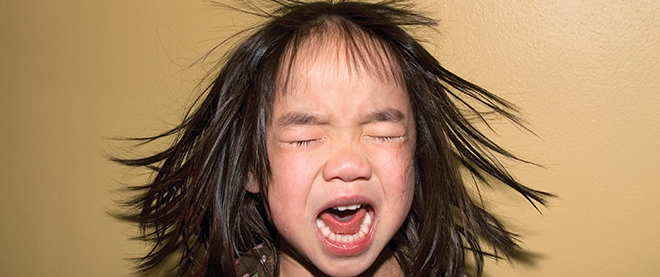Macleans – March 19, 2013
by Anne Kingston
A look at the new psychiatric guidelines that are pitting doctors against doctors
Every parent of a preteen has been there: on the receiving end of sullen responses, bursts of frustration or anger, even public tantrums that summon the fear that Children’s Aid is on its way. Come late May, with the publication of the fifth edition of the Diagnostic and Statistical Manual of Mental Disorders (DSM-5), however, such sustained cranky behaviour could put your child at risk of a diagnosis of “disruptive mood dysregulation disorder.” This newly minted condition will afflict children between 6 and 12 who exhibit persistent irritability and “frequent” outbursts, defined as three or more times a week for more than a year. Its original name, “temper dysregulation disorder with dysphoria,” was nixed after it garnered criticism it pathologized “temper tantrums,” a normal childhood occurrence. Others argue that even with the name change the new definition and diagnosis could do just that.
“Disruptive mood dysregulation disorder” isn’t the only new condition under scrutiny in the reference manual owned and produced by the American Psychiatric Association (APA)—and lauded as psychiatry’s bible. Even though the final version of DSM-5 remains under embargo, its message is being decried in some quarters as blasphemous. Its various public drafts, the third published last year, have stoked international outrage—and a flurry of op-ed columns, studies, blogs and petitions. In October 2011, for instance, the Society for Humanistic Psychology drafted an open letter to the DSM task force that morphed into an online petition signed by more than 14,000 mental health professionals and 50 organizations, including the American Counseling Association and the British Psychology Society.
Of fundamental concern is a loosening and broadening of categories to the point that everyone potentially stands on the brink of some mental-disorder diagnosis, or sits on some spectrum—a phenomenon the American psychologist Frank Farley has called “the sickening of society.” One change summoning criticism is DSM-5’s reframing of grief, that inescapable fact of life, by removing the “bereavement exclusion” for people who’ve experienced loss. Previously, anyone despairing the death of a loved one wasn’t considered a candidate for “major depression” unless their despondency persisted for more than two months or was accompanied by severe functional impairment, thoughts of suicide or psychotic symptoms. No longer.
Other updates to DSM-5, the first full revision in nearly two decades, have raised red flags. Forgetting where you put your keys or other memory lapses, a fact of aging formerly shrugged off as “a senior moment,” could portend “minor neurocognitive disorder,” a shift destined to also stoke anxiety. Anyone who overeats once a week for three weeks could have a “binge-eating disorder.” Women not turned on sexually by their partners or particularly interested in sex are candidates for “female sexual interest/arousal disorder.” Nail-biters join the ranks of the obsessive-compulsive, alongside those with other “pathological grooming habits” such as “hair-pulling” and “skin-picking.”
The fuzzy boundary between “generalized anxiety disorder” (GAD) and everyday worries has also been blurred. As Allan V. Horowitz, a sociology professor at Rutgers University, points out, changes in this category are potentially the most important because they affect the largest number of people. Under the new “somatic symptom disorder” (SSD), for instance, people who express any anxiety about physical symptoms could also be saddled with a mental illness diagnosis, which could thwart their attempts to have their physical issues taken seriously. To meet the definition one only needs to report a single bodily symptom that’s distressing and/or disruptive to daily life and have just one of the following three reactions for at least six months: “ ‘disproportionate’ thoughts about the seriousness of their symptom(s); a high level of anxiety about their health; devoting excessive time and energy to symptoms or health concerns.”
DSM-5 represents a step back in mental health care, says psychologist Peter Kinderman, head of the Institute of Psychology, Health and Society at the University of Liverpool. Kinderman, who is organizing an international letter of objection to DSM-5 to be posted on dsm5response.org, which launches March 20, believes many new DSM classifications, among them “female orgasmic disorder,” defy common sense. “If you’re not enjoying sex, it’s a problem, but it’s crazy to say it’s a mental illness,” he says. He also questions the new criteria for alcohol and drug “substance-use disorders.” “According to it, 40 to 50 per cent of college students should be considered mentally ill.” Such diagnoses interfere with the human helping response, says Kinderman. “When women get raped, it’s traumatic; when soldiers go to war, they come back emotionally affected. We don’t need the new label, ‘post-traumatic stress disorder,’ ” he says.



SHARE YOUR STORY/COMMENT